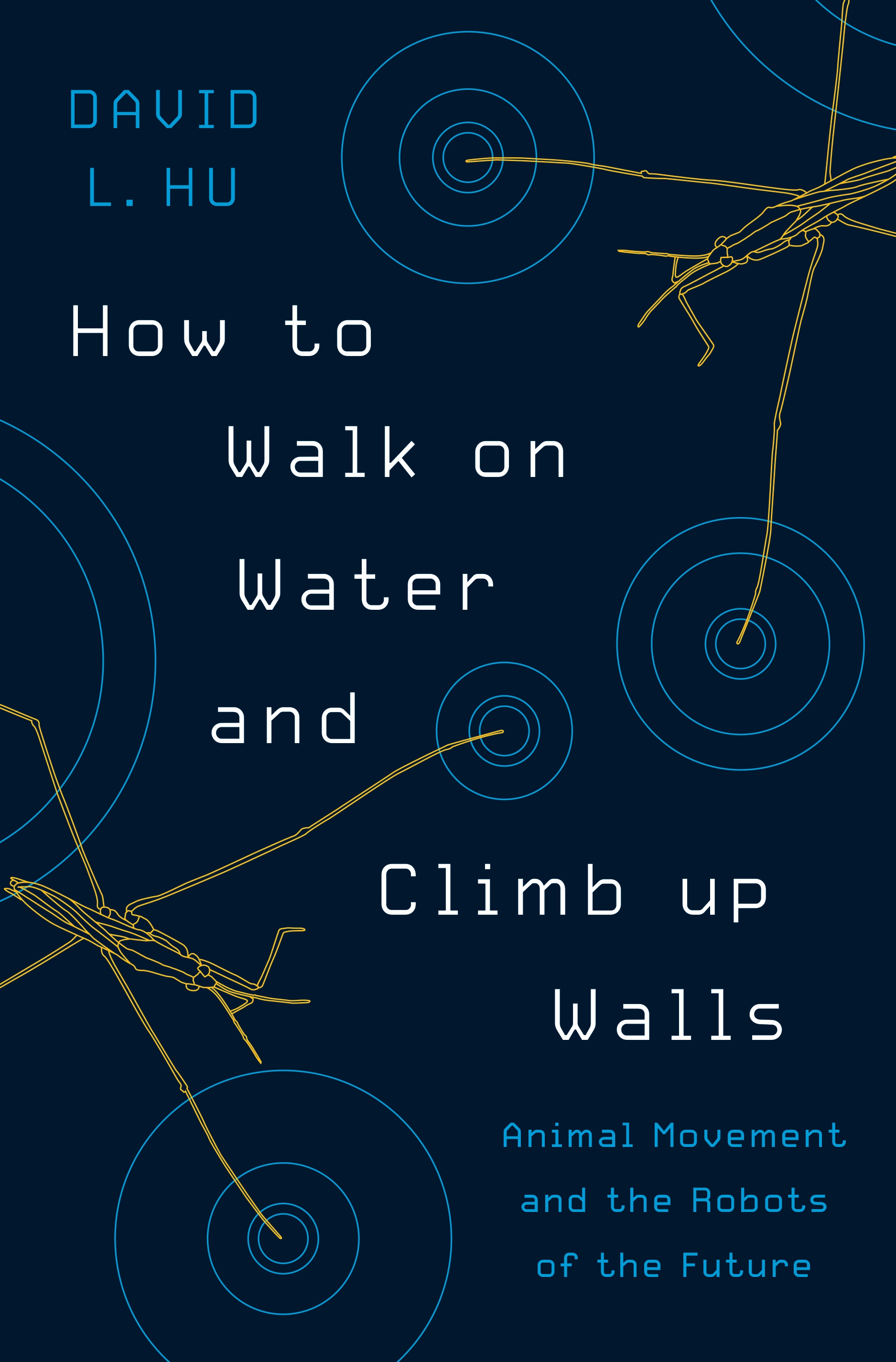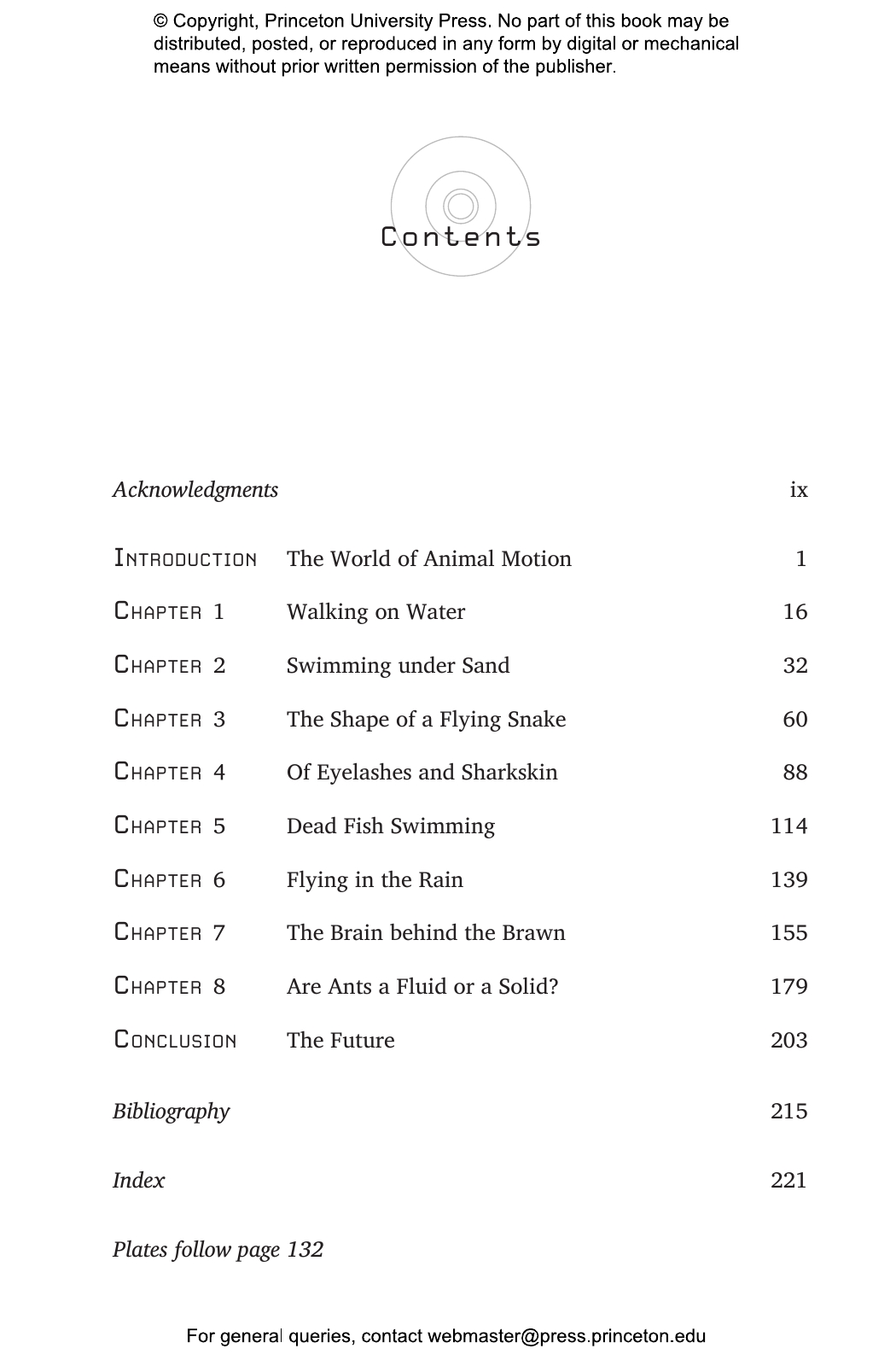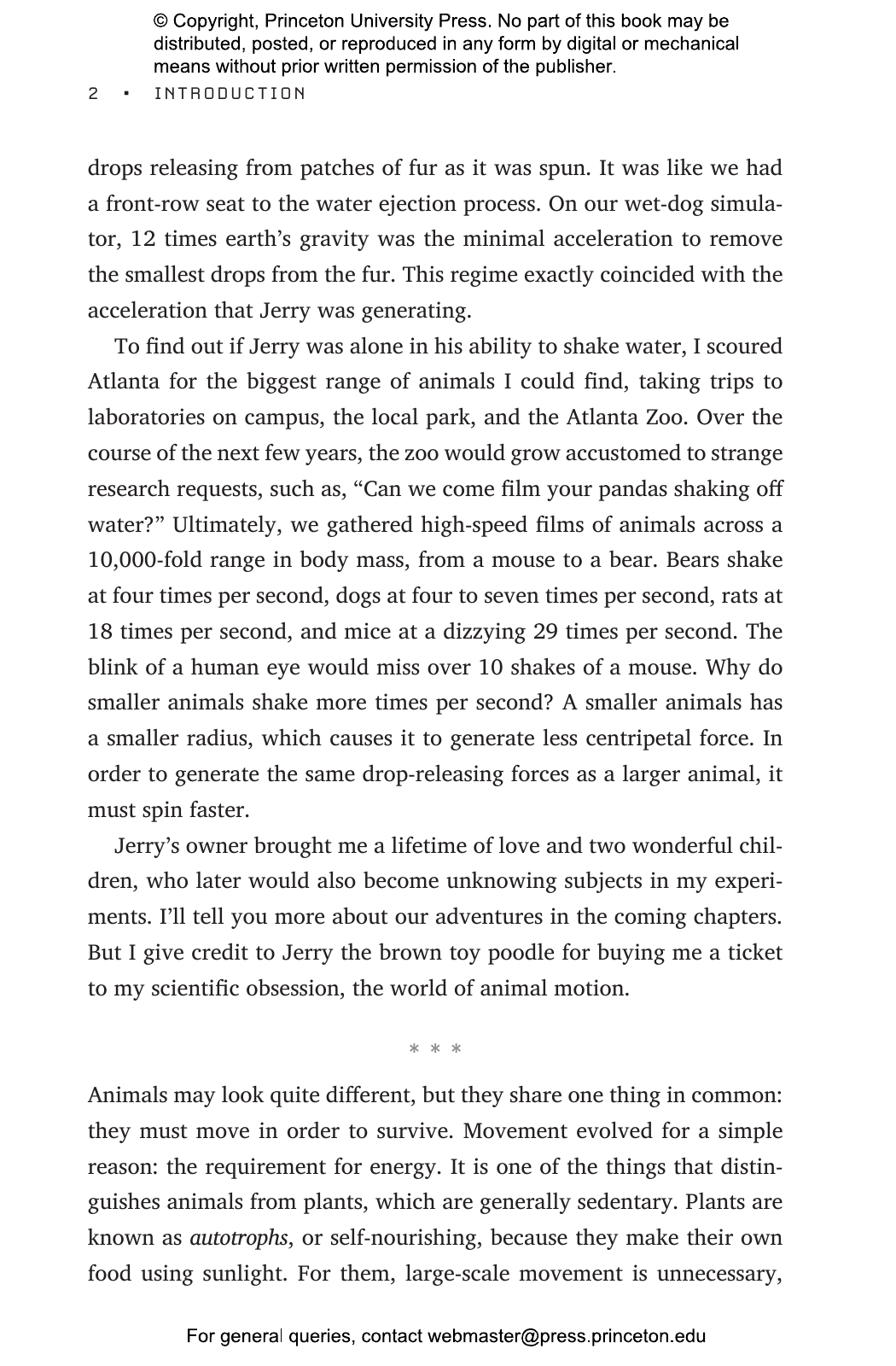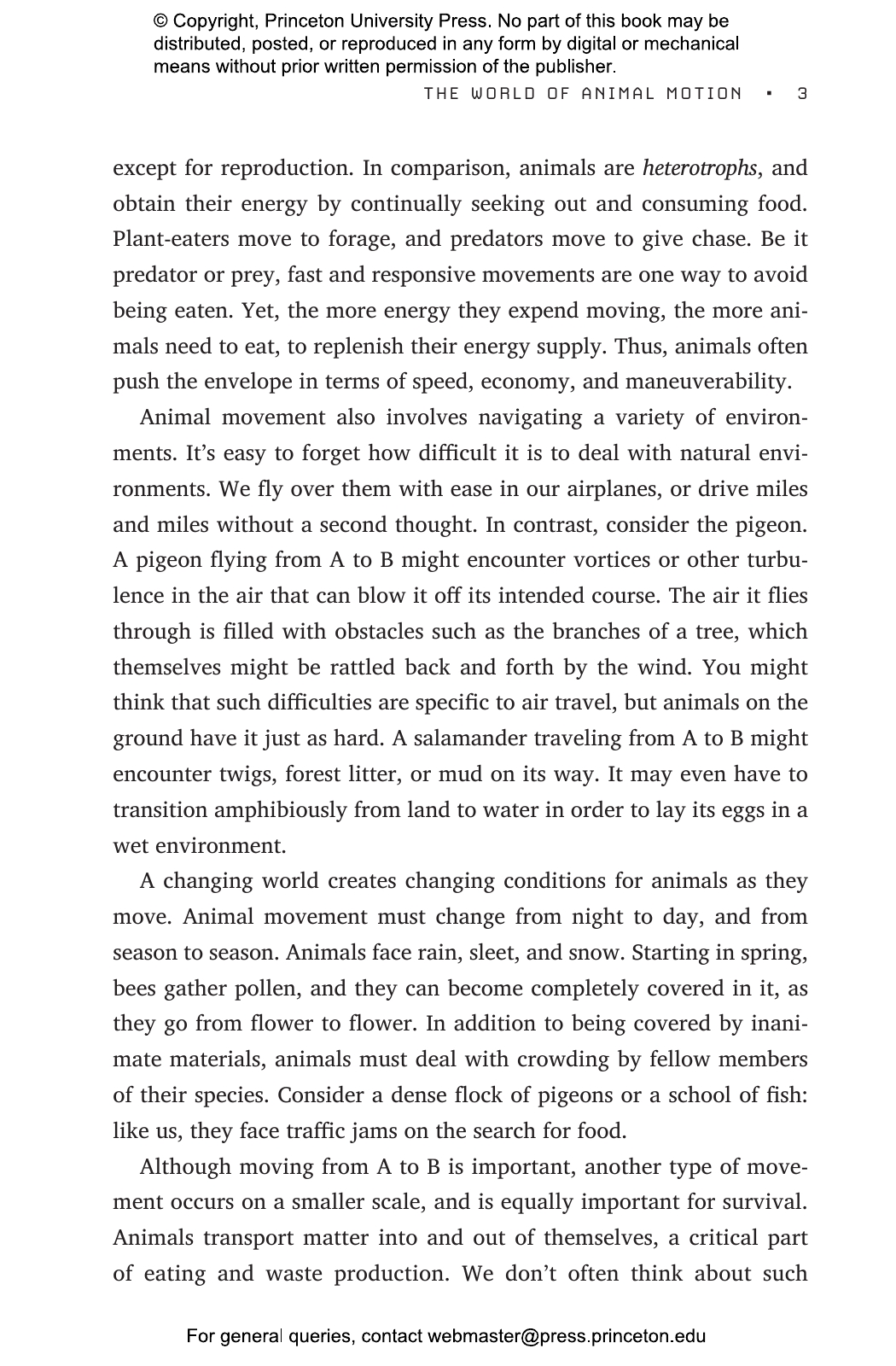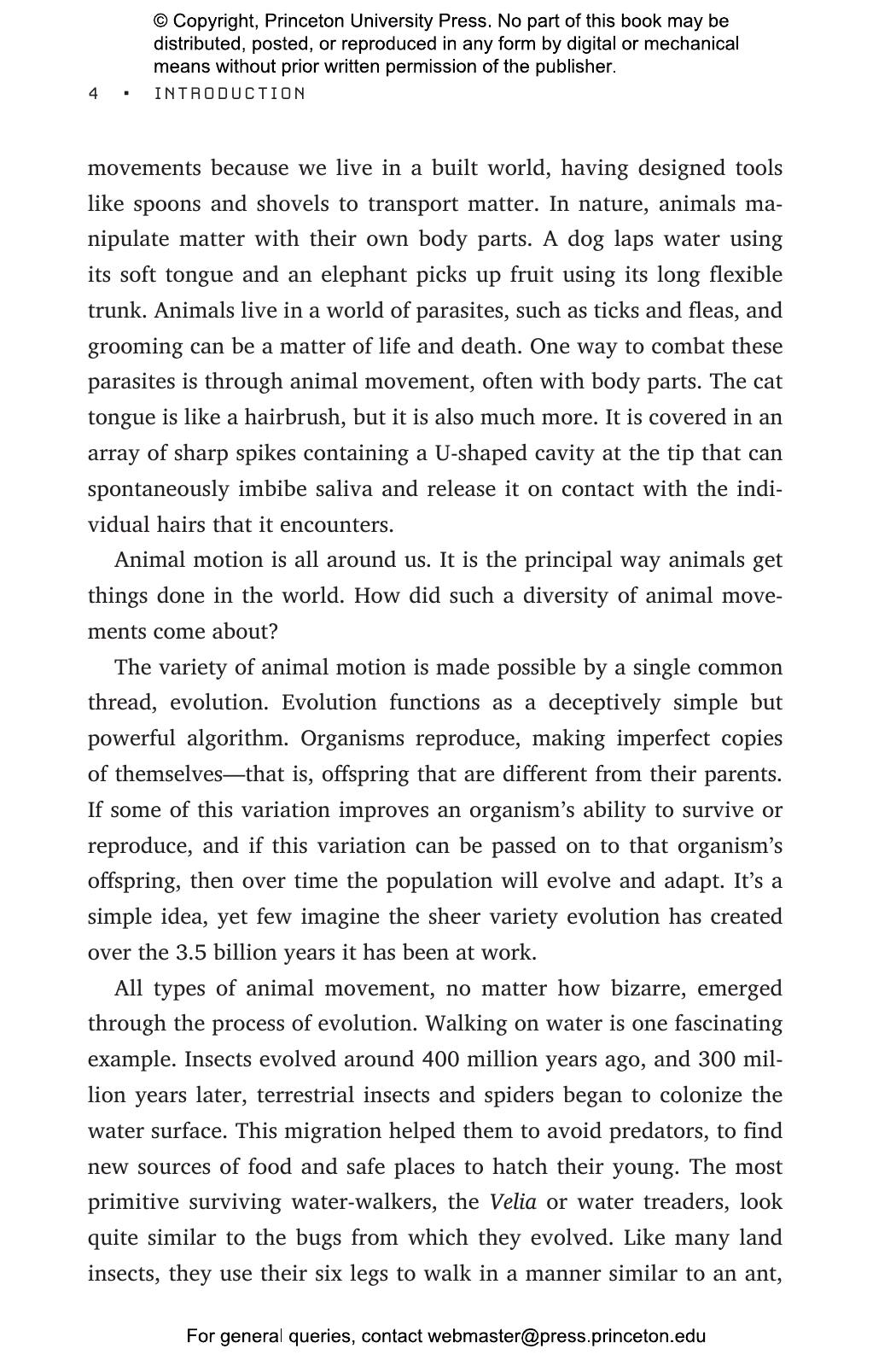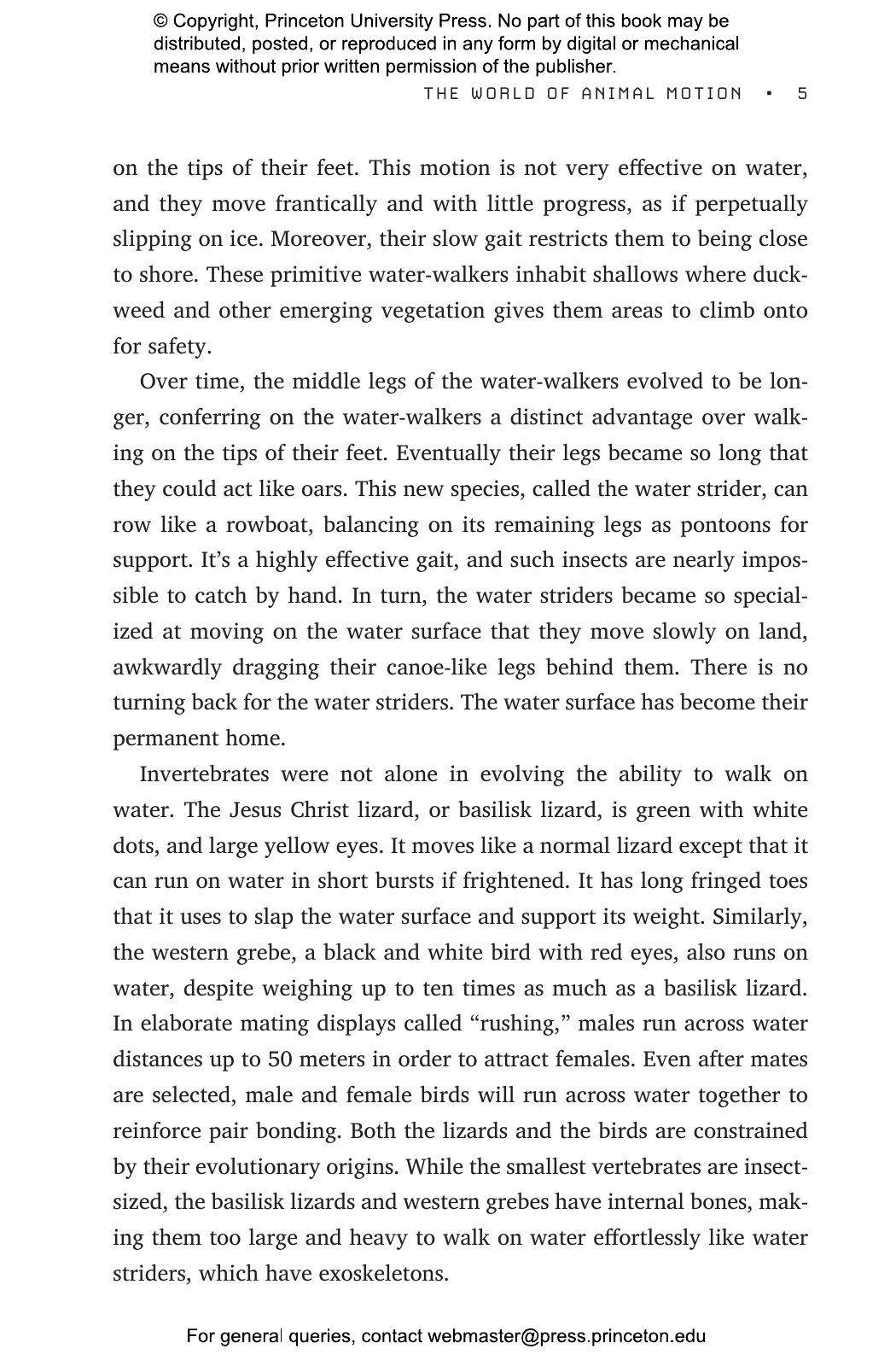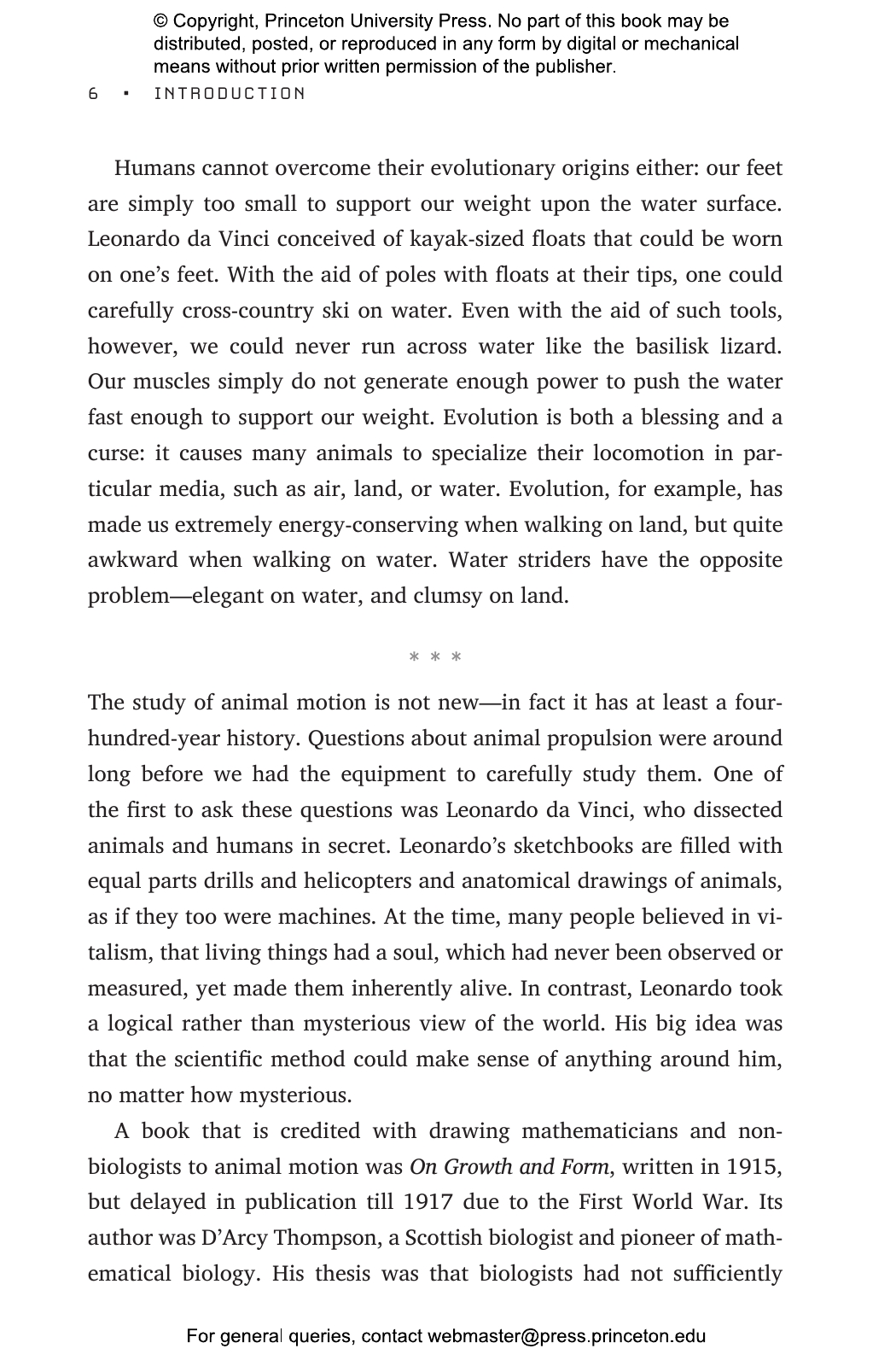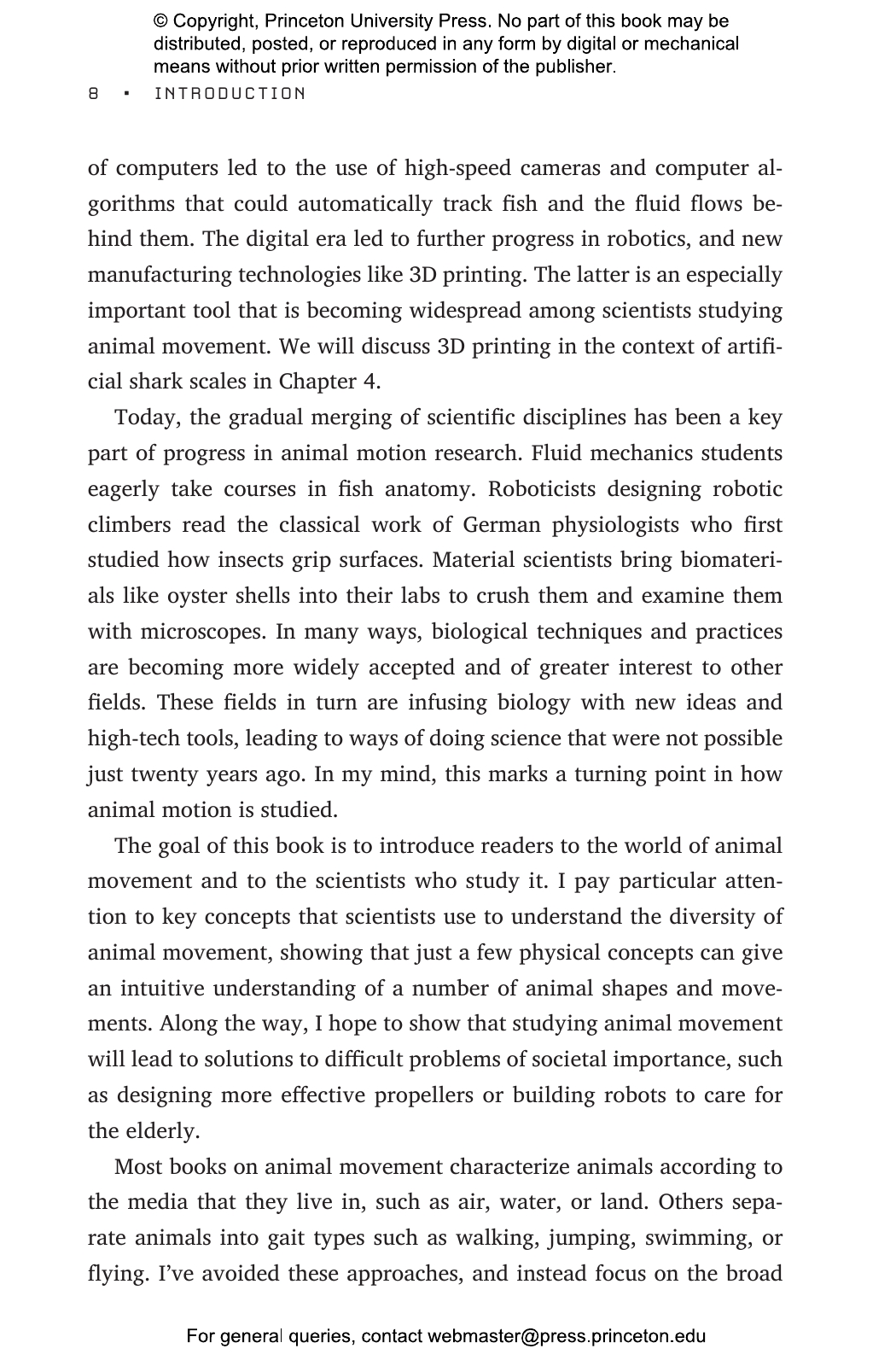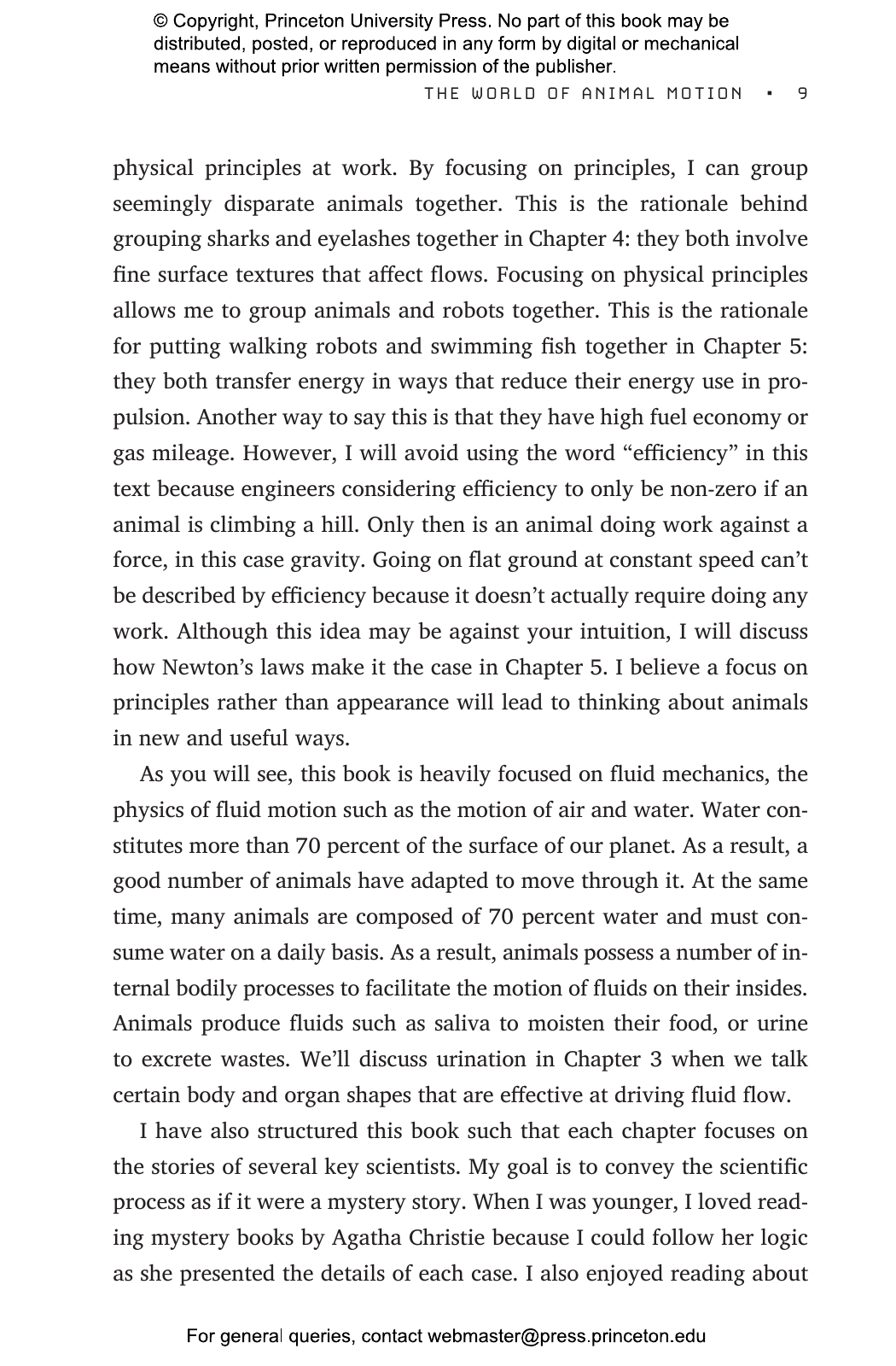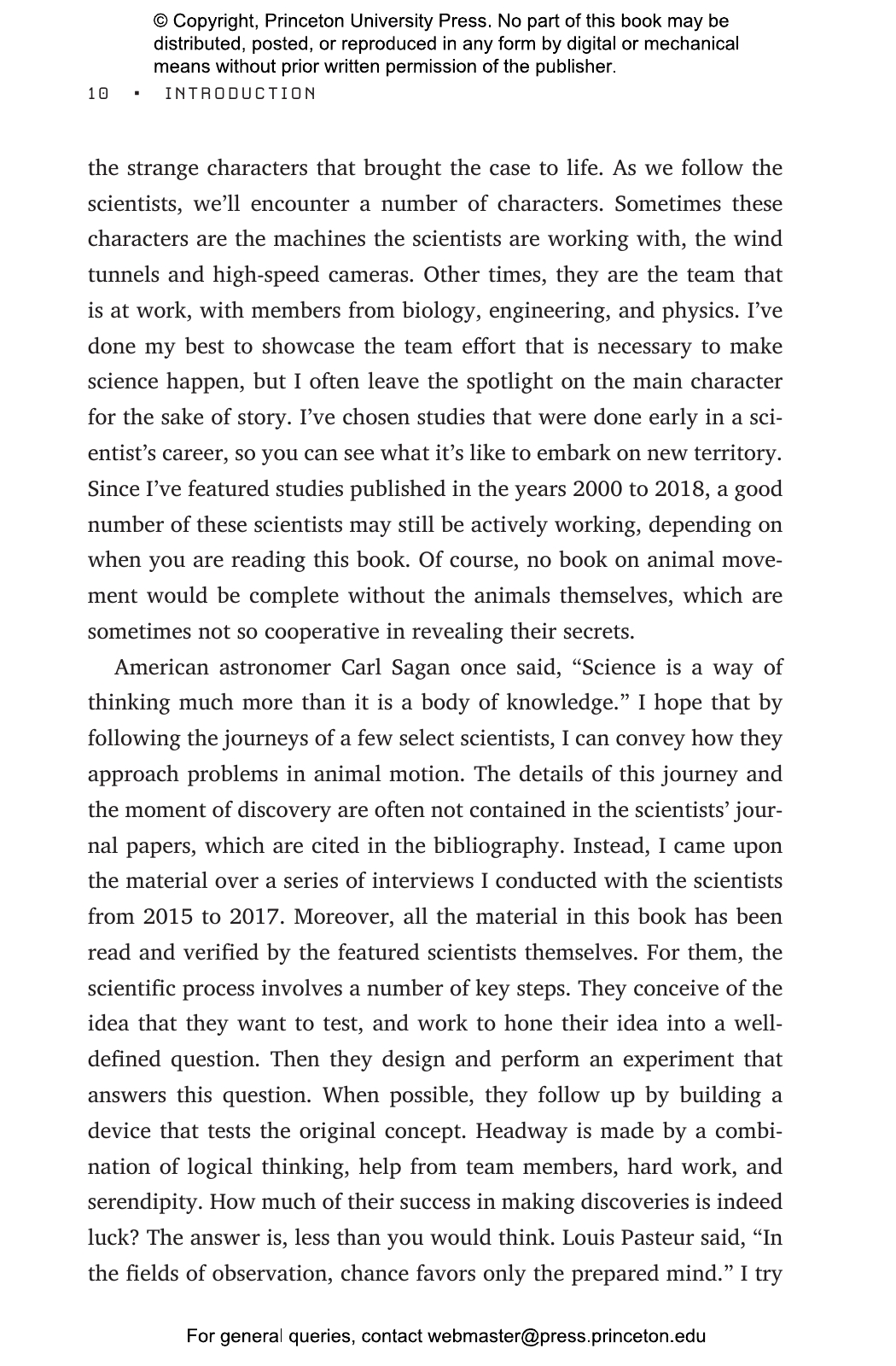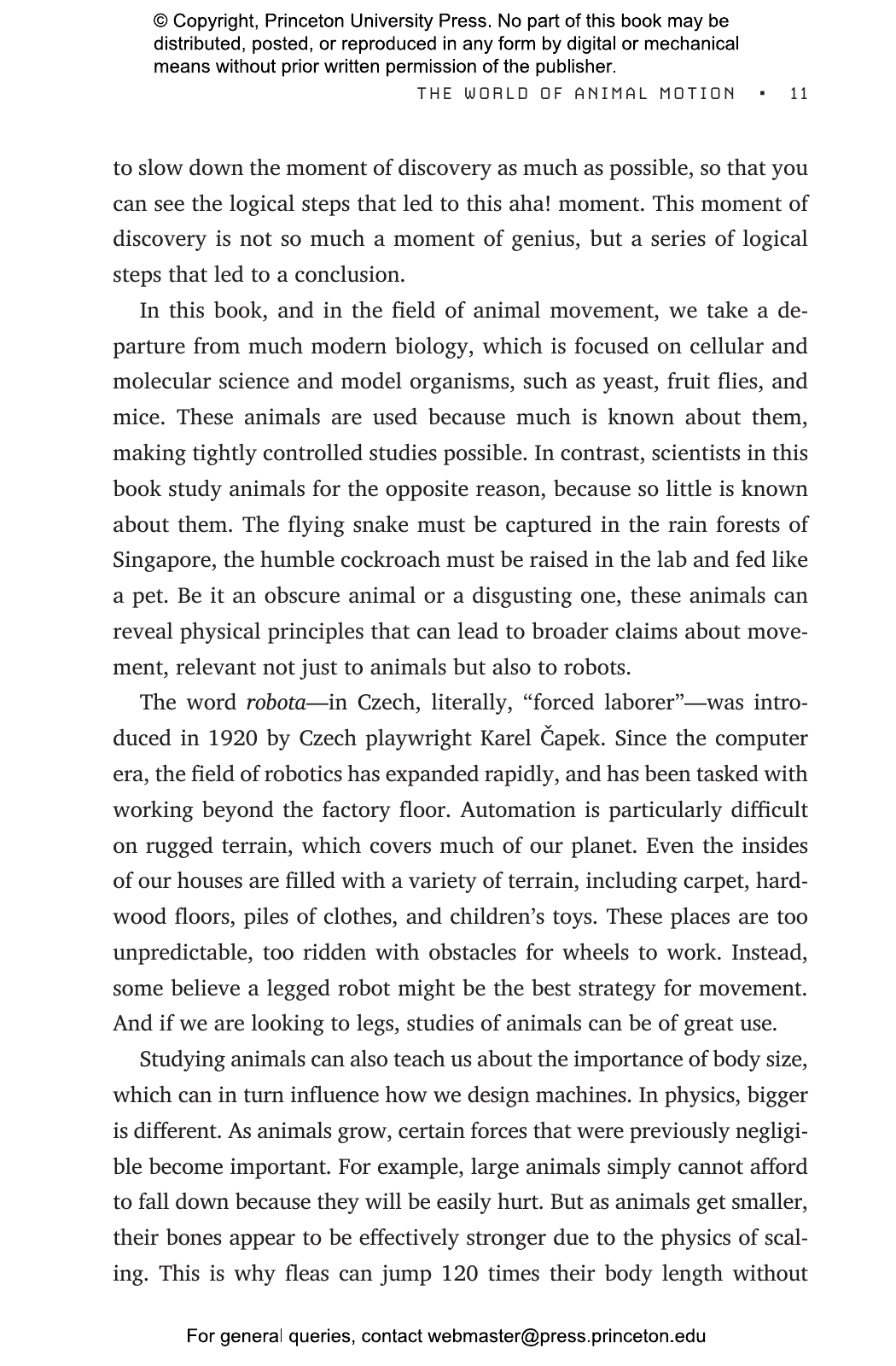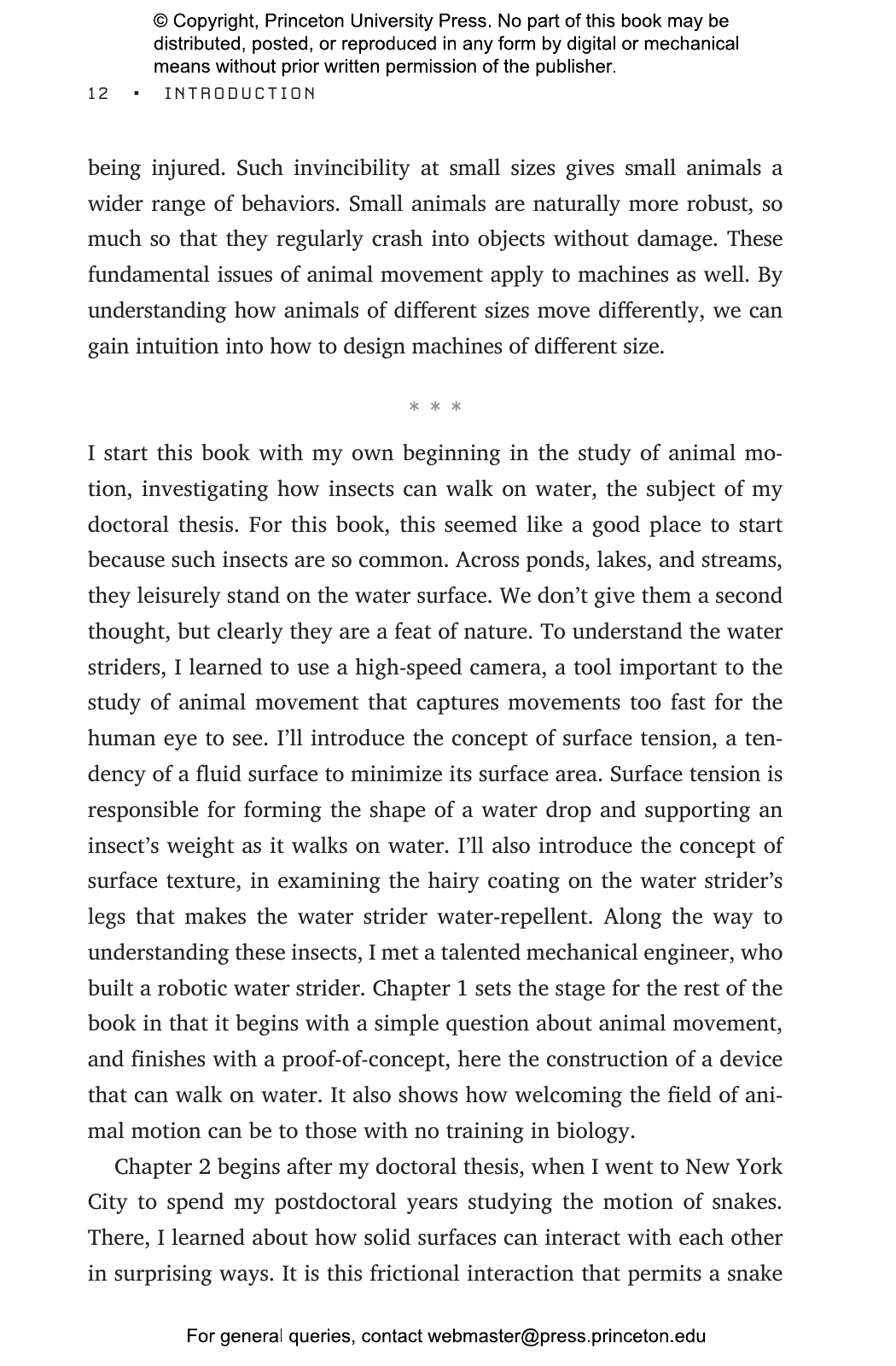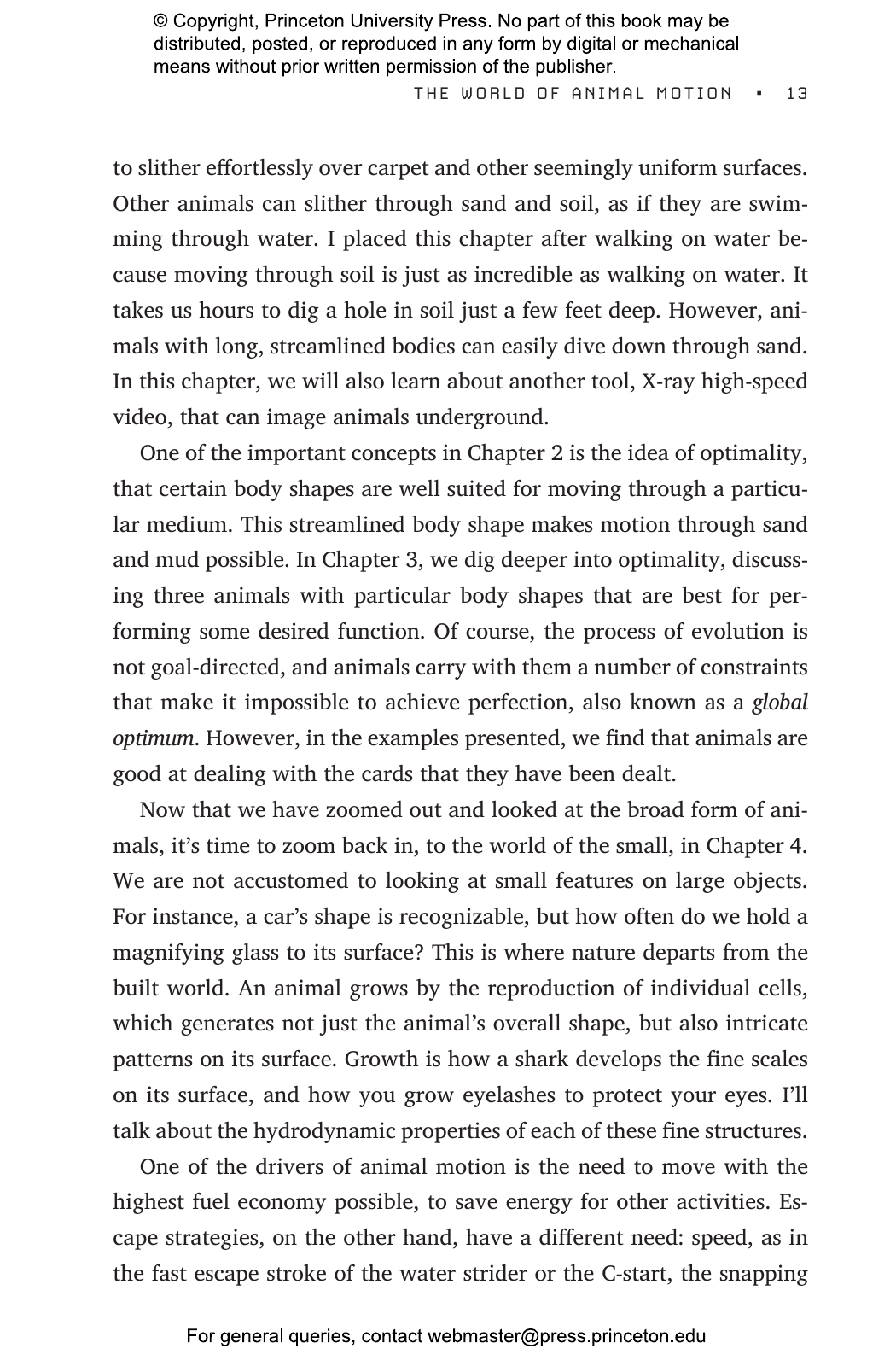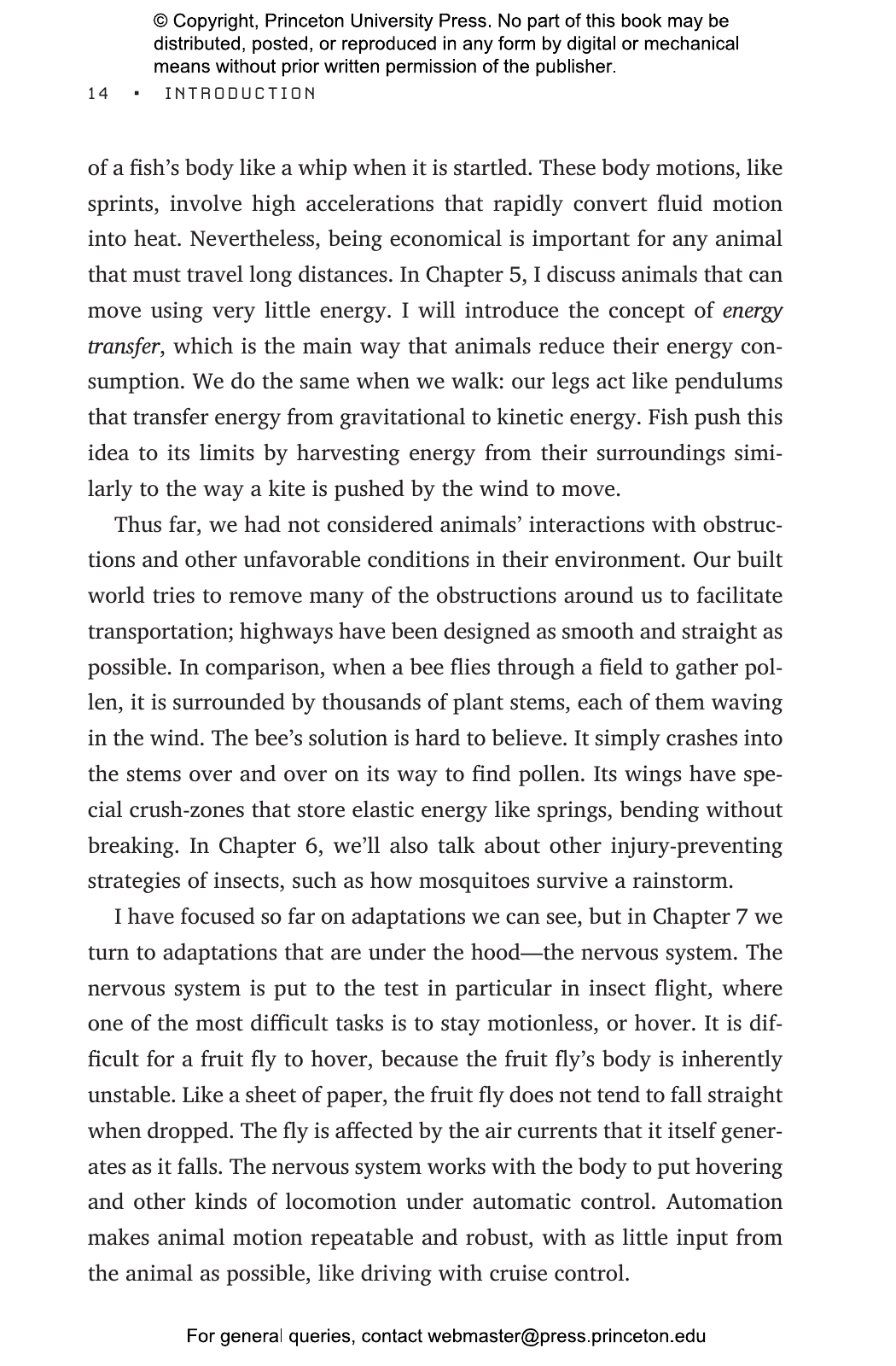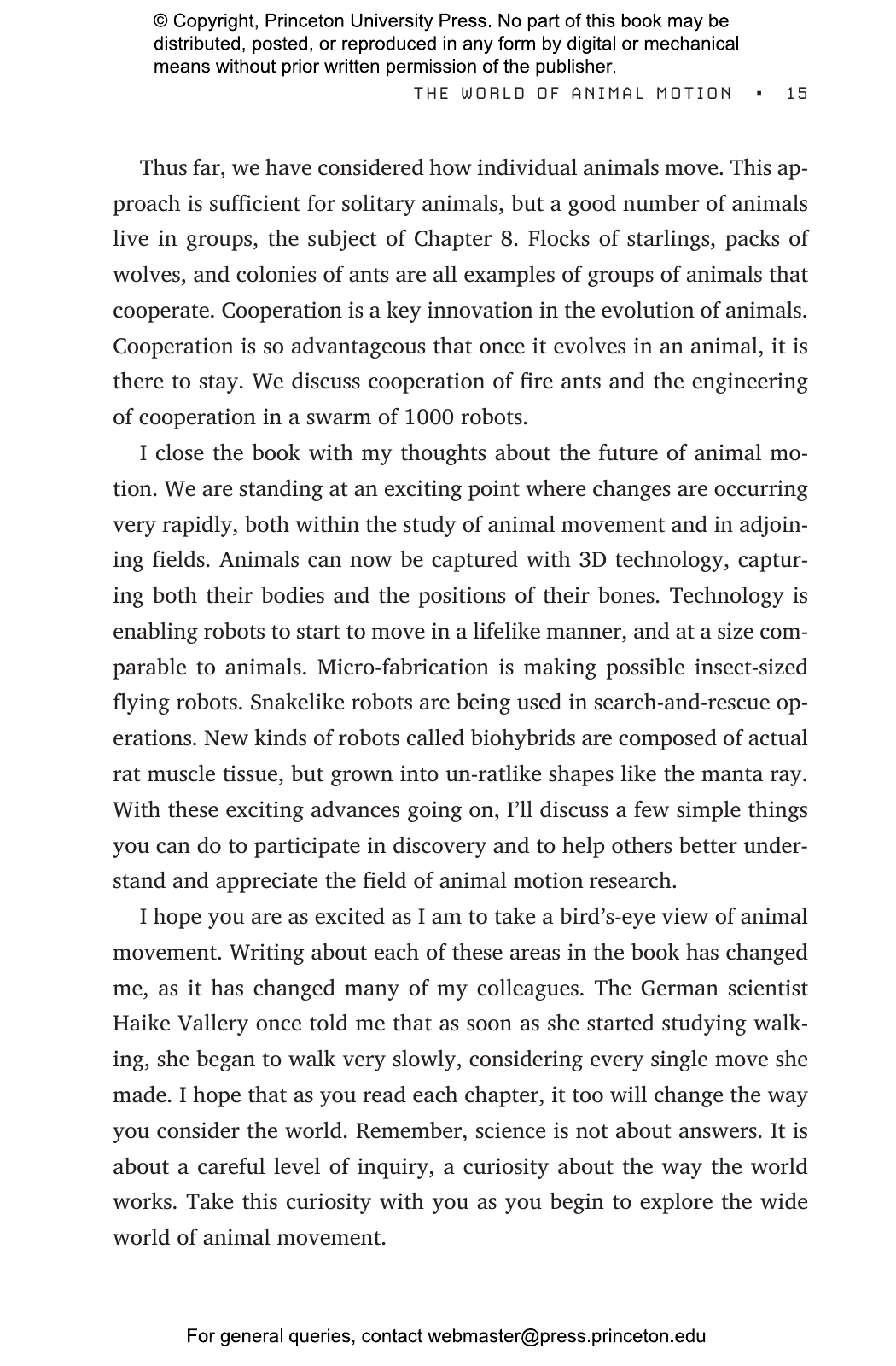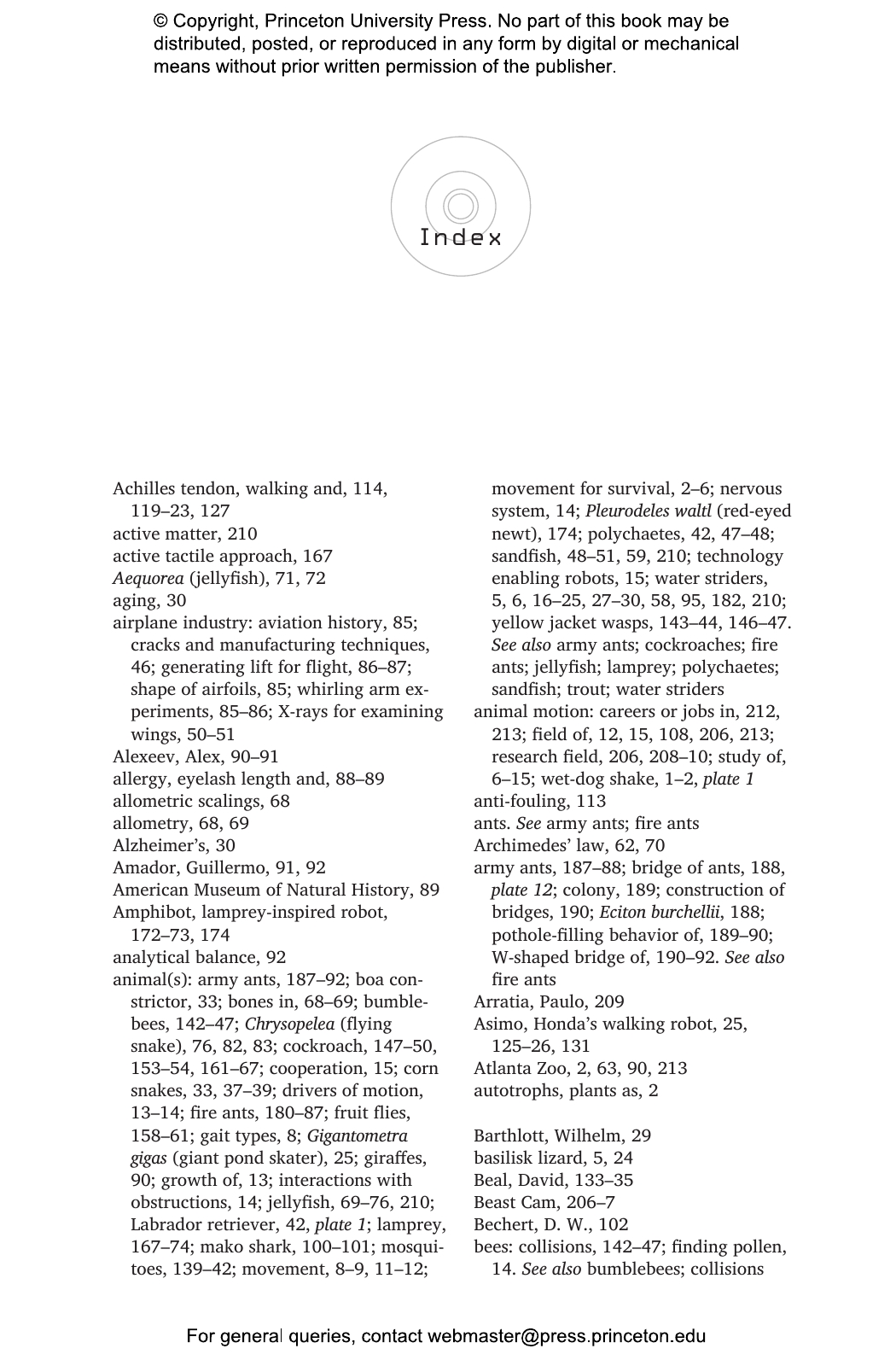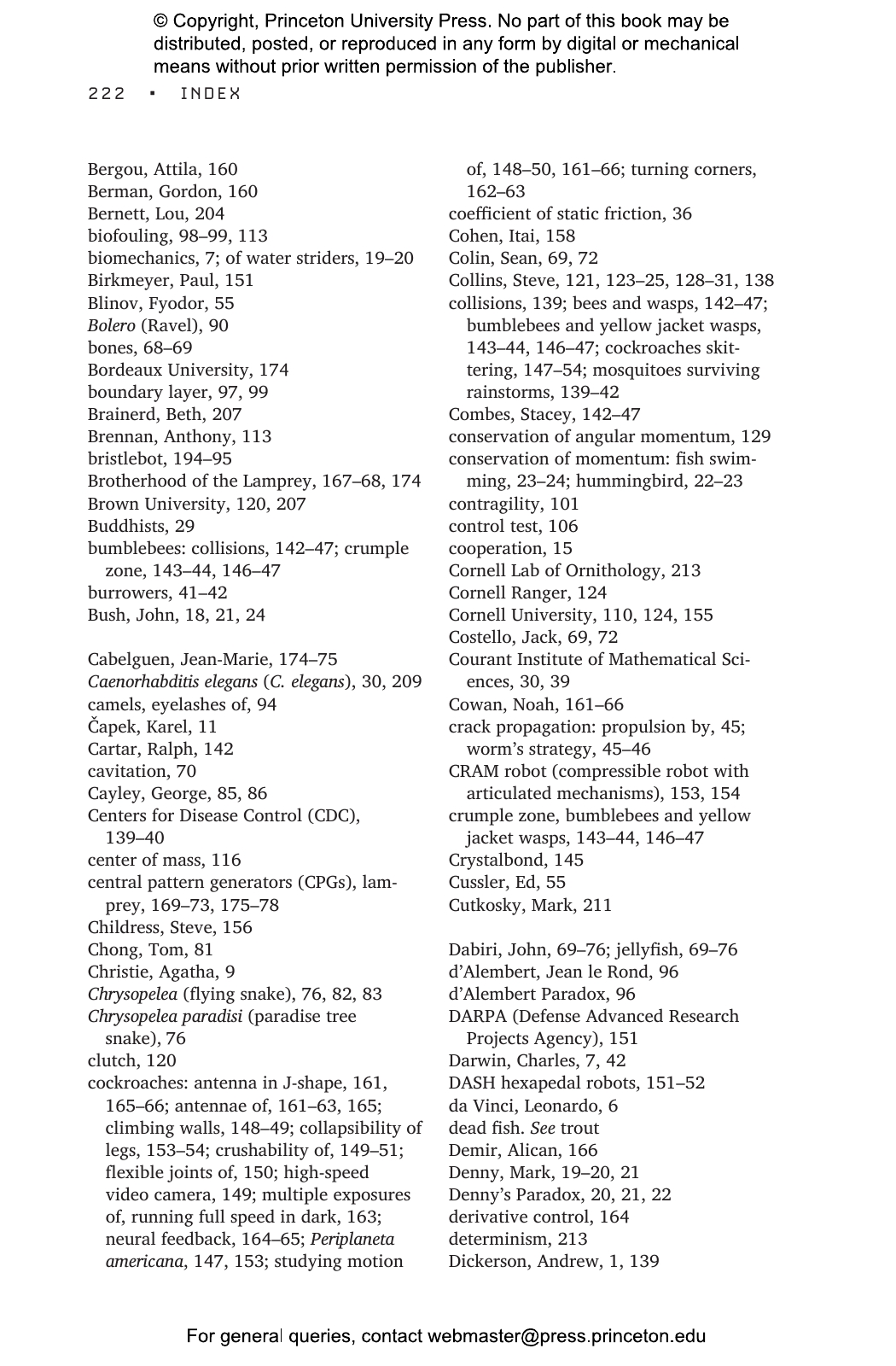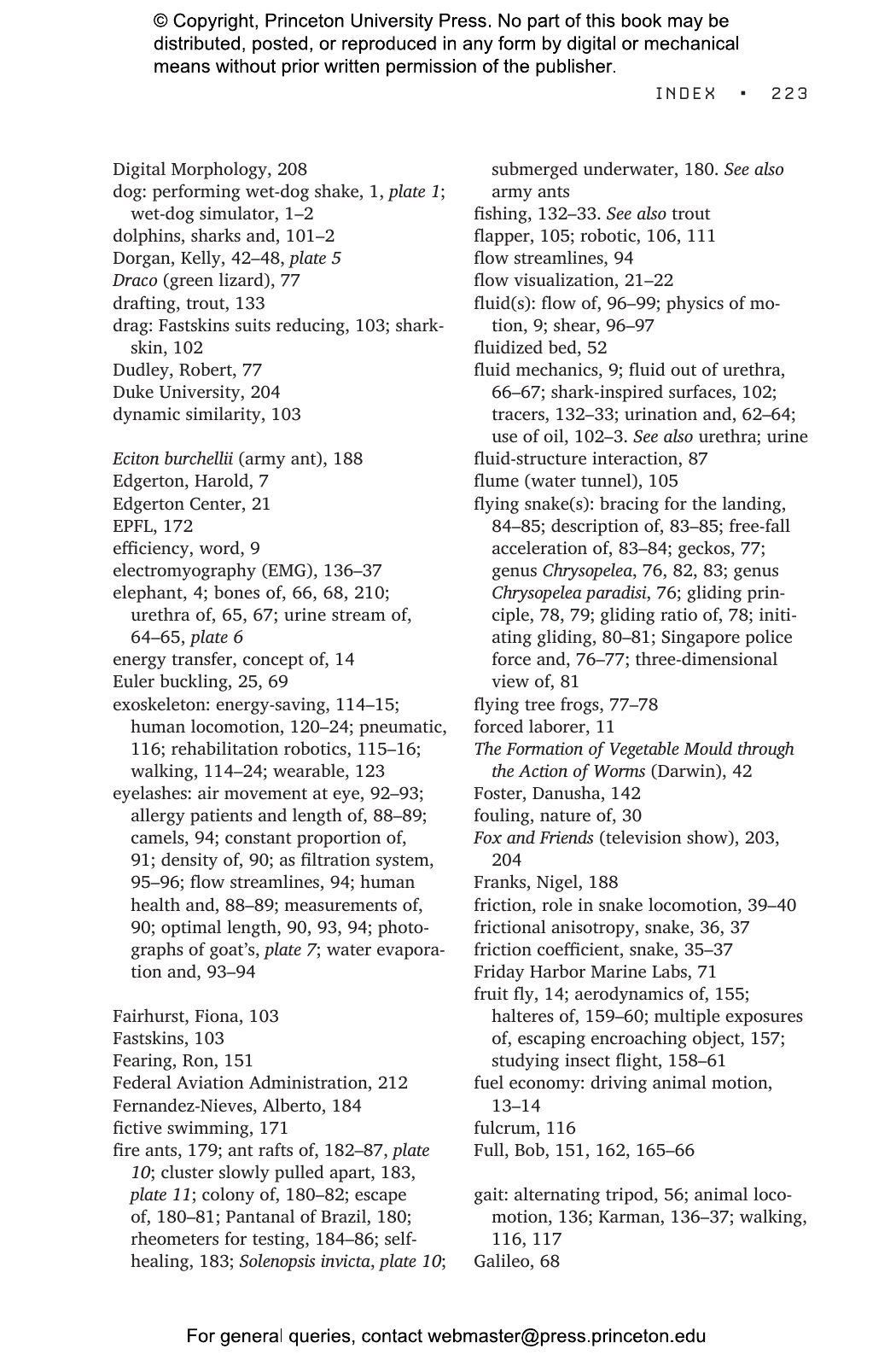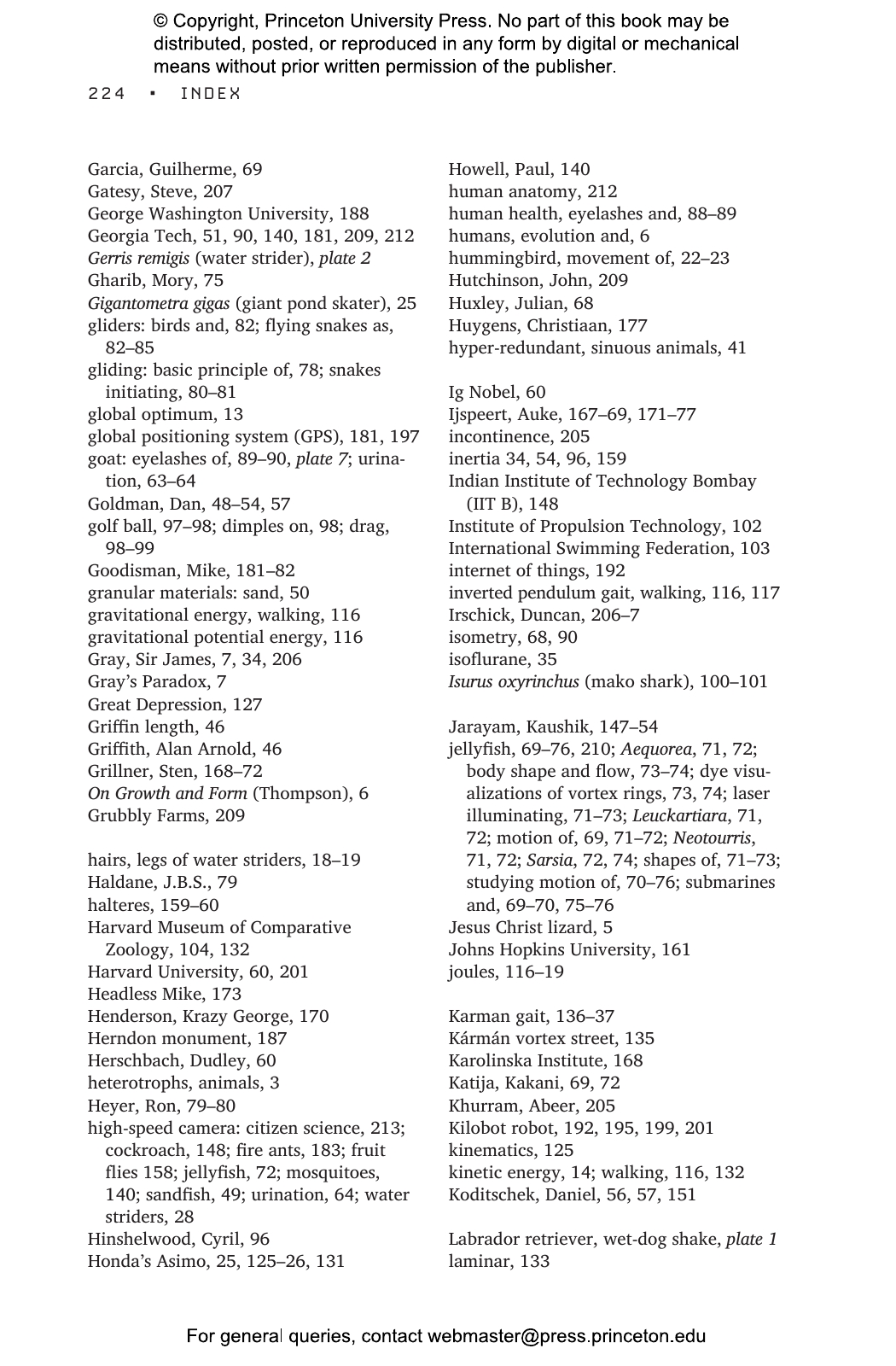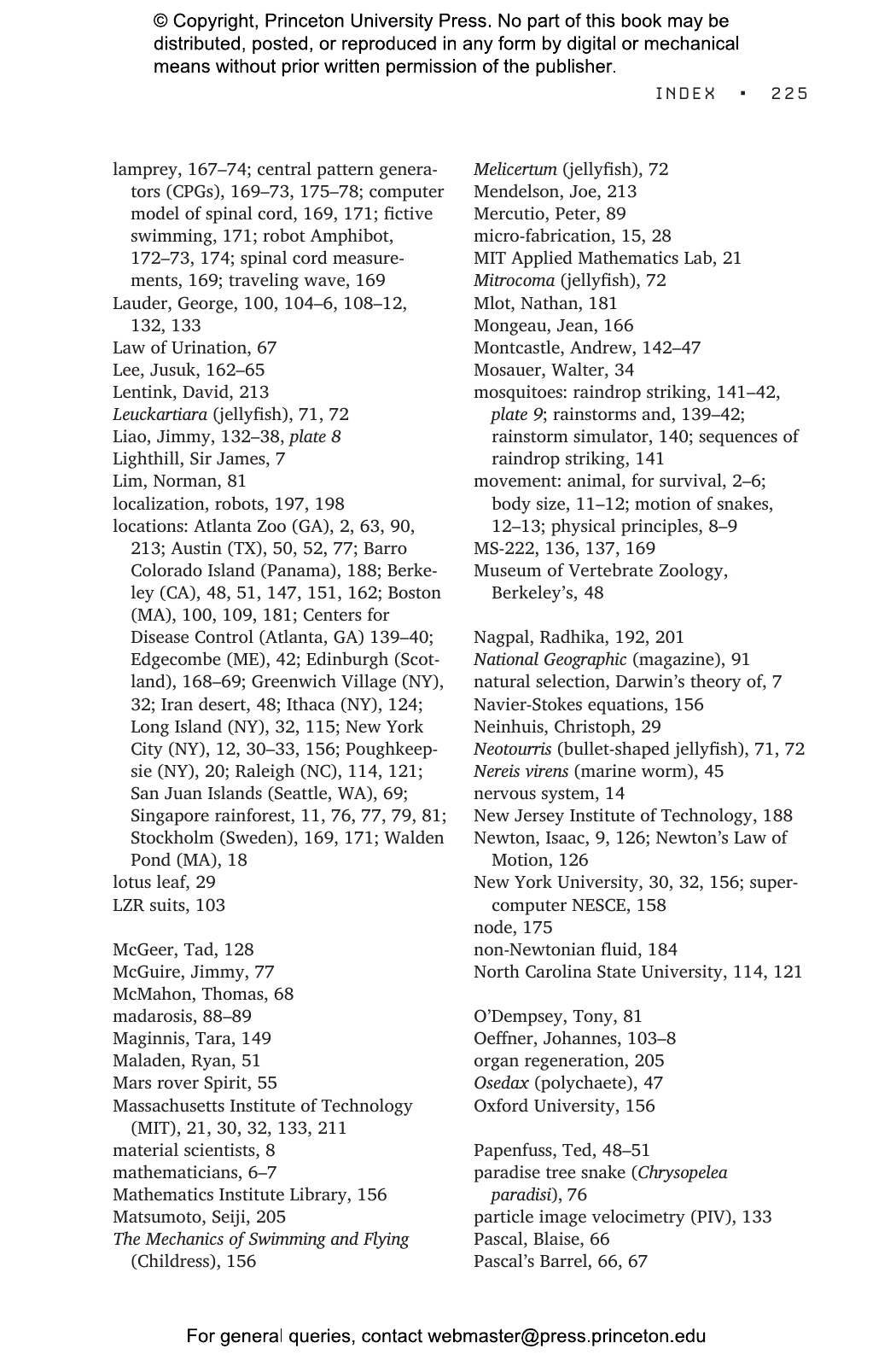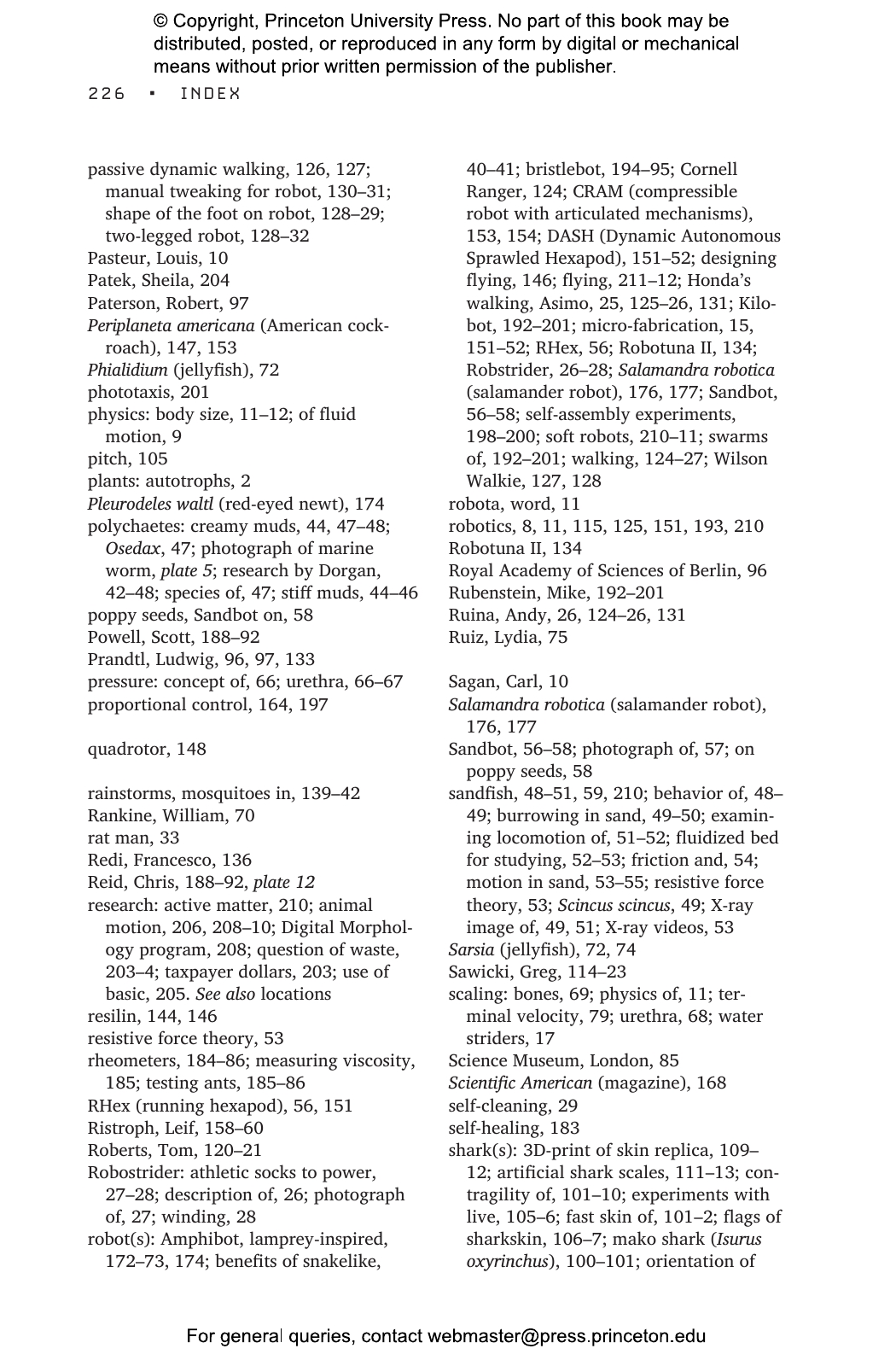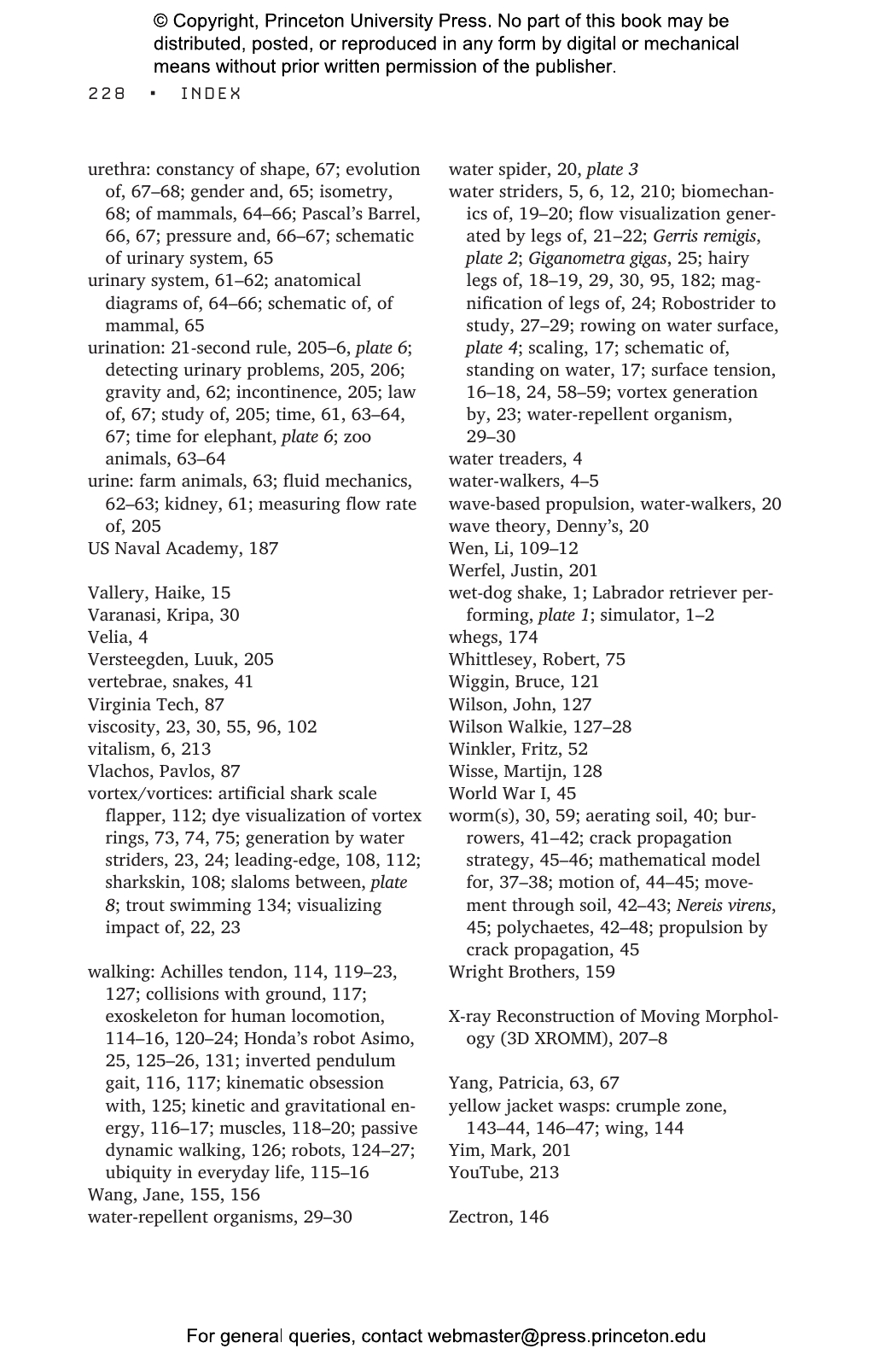Insects walk on water, snakes slither, and fish swim. Animals move with astounding grace, speed, and versatility: how do they do it, and what can we learn from them? In How to Walk on Water and Climb up Walls, David Hu takes readers on an accessible, wondrous journey into the world of animal motion. From basement labs at MIT to the rain forests of Panama, Hu shows how animals have adapted and evolved to traverse their environments, taking advantage of physical laws with results that are startling and ingenious. In turn, the latest discoveries about animal mechanics are inspiring scientists to invent robots and devices that move with similar elegance and efficiency.
Hu follows scientists as they investigate a multitude of animal movements, from the undulations of sandfish and the way that dogs shake off water in fractions of a second to the seemingly crash-resistant characteristics of insect flight. Not limiting his exploration to individual organisms, Hu describes the ways animals enact swarm intelligence, such as when army ants cooperate and link their bodies to create bridges that span ravines. He also looks at what scientists learn from nature’s unexpected feats—such as snakes that fly, mosquitoes that survive rainstorms, and dead fish that swim upstream. As researchers better understand such issues as energy, flexibility, and water repellency in animal movement, they are applying this knowledge to the development of cutting-edge technology.
Integrating biology, engineering, physics, and robotics, How to Walk on Water and Climb up Walls demystifies the remarkable mechanics behind animal locomotion.
Awards and Recognition
- Co-Winner of the AIP Science Communication Book Award, American Institute of Physics
- Longlisted for the Young Adult Science Book Award, AAAS/Subaru SB&F Prize for Excellence in Science Books
- Finalist for the AAAS/Subaru SB&F Prizes for Excellence in Science Books, Young Adult Science Books
- One of Inverse's Best Science Books of 2018
"In How to Walk on Water and Climb up Walls . . . [Dr. Hu] describes both the silliness and profundity of his brand of research. . . . He refers to the urethra as a pee-pee pipe. And he corrects his son when he brags that only he, not his sister, has a pee-pee pipe. . . . Once older, his children may never forgive him for this book. But middle school science teachers and nerds everywhere will thank him."—James Gorman, New York Times
"[How to Walk on Water and Climb Up Walls] answers questions you probably won’t realize you even had, but they’re questions with serious answers that span the worlds of physics, fluid mechanics, and biology. Throughout the book, Hu demonstrates the extraordinary value day-to-day curiosity brings to science."—Christopher Intagliata, Science Friday
"[An] engrossing tour of faunal motion."—Barbara Kiser, Nature
"Hu distills the complex science that demystifies how flying snakes glide and sharks make for remarkably efficient swimmers. Breaking down these concepts is not easy and Hu is up to the task, backing up the science with impassioned explainers."—Ronak Gupta, The Wire
"Roboticists tasked with designing the machines of tomorrow are inspired by the spectacular blueprints created by nature. In How to Walk on Water and Climb up Walls, David Hu dives into these all-natural plans and explains why they’re so useful to robot design. The way a snake slithers or a dog shakes off water, it seems, are far too valuable to take for granted."—Sarah Sloat, Inverse
"A fascinating book."—Dominic Lenton, Engineering and Technology
"This highly accessible and exciting book is a quick, enjoyable adventure."—Grrl Scientist, Forbes
"Hu masterfully explains scientific revelations such as how insects walk on water, snakes slither and mosquitos survive rainstorms using rich tales of discovery and analogies that brim with satisfying ‘aha’ moments."—Natalie Parletta, Cosmos
"Hu weaves examples into a story seamlessly and intelligibly. . . . This book is a lesson in keeping an open mind to how strange the world is."—Laura Mast, Massive Science
"Hu’s writing is chatty, entertaining, gracious, and very clear."—Ernest Davis, SIAM News
"Through stories about researchers he has interacted with over the course of his career and a biographical view of his own projects, Hu shows readers that we still have a lot to learn about animal locomotion."—Marc S. Lavine, Science
"A joyous read for curious minds."—Farid Pazhoohi, Canadian Field Naturalist
"A wonderful propaedeutic survey . . . of how biomechanics works and inspires bioengineering."—Ephraim Nissan, Paleontological Society
“With infectious enthusiasm and curiosity, David Hu asks why natural selection may have favored one design over another. From flying snakes to the eyelashes of giraffes, he sees mechanical challenges everywhere, and his crazy experiments help us understand how animals dry their bodies, move, pee, and eat.”—Frans de Waal, author of Are We Smart Enough to Know How Smart Animals Are?
“I recommend this book to all interested in biology and nature-inspired engineering. They will learn much and be marvelously entertained.”—Bert Hölldobler, coauthor of The Ants
“Read this fascinating book to learn how sharks move, why an elephant doesn’t take longer to empty its bladder than a human does, how mosquitoes fly in the rain, and how cockroaches avoid bumping into walls in the dark. Read it too to learn why the study of these seemingly obscure corners of the living world has the potential to offer enormous benefits to humanity.”—Rob Dunn, author of Never Out of Season
“This clear and engaging book introduces readers to the study of animal motion and mechanics. Demonstrating the effectiveness of an interdisciplinary approach to the analysis of animal structure and function, the book balances attention to pure science and discoveries about fundamental aspects of the natural world with a consideration of how research in this area could contribute to new technologies.”—Sharon Swartz, Brown University


